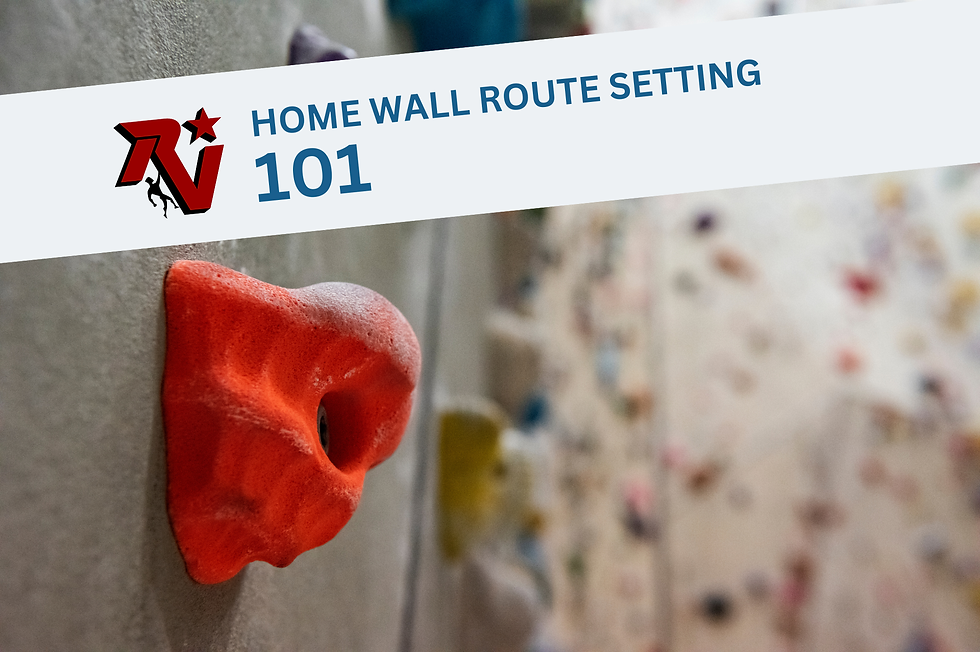Climbing Training, Olympian Style
- Dovi Hirsch
- Aug 14, 2021
- 4 min read
by Christopher Schafenacker

The past year might qualify as the strangest in climbing’s short history, and the reason isn’t what you’d expect. No, it’s not because climbers have been largely barred from travel and forced to make do with local offerings—though, yes, that’s been awful and weird. And no, it’s not because we’ve had to wear a mask at the gym and slather our hands in liquid chalk. No, it’s not even because the fist bump has suddenly become a universally accepted form of greeting and not just the preferred salute of climbing bros. Instead, this past year has been among the strangest in our sport’s history because nearly all of the biggest names dedicated their efforts to training—not sending—and training in a way like never before.
I’m talking about the Olympics, of course, and in particular the unique demands of this year’s games. Bouldering and lead specialists were forced to hone their speed skills; speed climbers had to learn to tie a double figure eight; and everyone needed to come up with a strategy to navigate the nuances of the combined format and multiplication scoring system. Say what you will about the structure of climbing’s Olympic debut, the competition was riveting, and more than that, it presented an athletic challenge unlike any other sport. No two climbers arrived with the same strengths; no two prepared in the same way; and hence, looking at their different approaches is as much a subject of intrigue as it is one of interest for those looking to step up their training.
How Climbing’s Elite Prepared for Tokyo 2020
Elite athletes don’t broadcast their training regimens for the world to see. Not only would doing so blunt their competitive edge, but it would also violate the intellectual property rights of their coaches. Designing a world-class training program isn’t easy, after all, and those with the skills to do so deserve to limit how they share their knowledge. Nonetheless, the internet offers tantalizing glimpses. What little information we have has been collected below.
Janja Garnbret
Despite the Olympics combining speed, bouldering, and lead climbing into one super-event, Garnbret admits that she had never touched a speed wall until two years prior arriving to Tokyo. Her fifth in the discipline and personal-best time of 7.81 seconds is therefore hard to comprehend. A partial explanation may rest in Garnbret having had access to partner Dominic Škofic’s home gym, “The Ranch,” throughout the pandemic, which features a regulation speed wall. However, she wasn’t the only Olympian with the privilege of elite private training facilities. Instead, Garnbret’s success in speed (and in every other discipline) likely comes down to two key factors: her extraordinary motivation and talent, as well as the advantage of being able to train alongside the rest of the Slovenian team, which includes crushers Mia Krampl, Lučka Rakovec, Vita Lukan, Jernej Kruder, Gregor Vezonik, and Domen Škofic.
Alberto Ginés Lopéz
Ginés López arrived at the Olympic competition everything Garnbret was not: not favored, not world-renowned, not the winner of multiple world cups…and yet he emerged, like her, with a gold medal around his neck. How the young Spaniard achieved this—and upset such titans as Adam Ondra and Tomoa Narasaki—is perhaps best explained by his incredible mental fortitude and all-around talent.
Ginés López spent 2021 running the World Cup circuit and delivering middling results but this makes sense for an athlete aiming not to peak but merely to gain experience at these competitions. Training in this way clearly steeled the Spaniard’s nerves, and it was this ability to not slip up that landed him on the top of the podium. Had Narasaki not lost a foot in his heat against Ginéz López in the speed climbing final, it would have been the Japanese who took gold but, of course, not messing up is crucial to being the best where winning in an elite sport is concerned.
Unfortunately, there is not enough space on the page to dig into other competitors’ training regimens, and yet a few surprising details are worth mention. Narasaki, for instance, apparently ran 100 laps per day on the speed wall in an attempt to add consistency to his already blistering times (so that slip in the finals must have really hurt). Ondra and Brook Raboutou integrated pranayama breathing exercises into their morning routines to bring both energy and relaxation. Finally, Alex Megos apparently trained for the Olympics by spending 15 hours a week on his Tension board and spray wall, demonstrating that fancy facilities are not necessarily required for world-class performance.
In Paris 2024, climbing will again form a part of the Olympic program…and yet the format will change. Speed will be disputed as a separate discipline, while lead and boulder will continue to pair as a combined event. With this in mind, athletes will no doubt return to more traditional training methods…and so it may just be that the Megos board diet becomes the staple of many competitors’ preparations. Check back in three years to find out ;)
Featured Climbing Training Gear
*NEW* The Rocketeer Wall: our free-standing adjustable solution for those who can’t mount a hangboard anywhere in their home or apartment—or who are limited on space. The Rocketeer gives climbers the additional option to set specific climbing holds. Recreate the crux holds of your proj and get ready to send, bruh.
The Rocket Wall: Available in 6’ and 8’ widths, it’s been tough for us to keep up with the demand for this innovative home climbing wall solution. Slightly overhanging, the Rocket Wall is big enough to set routes on, or to build a systems board.
The Rock-Stah: Our handcrafted version of a traditional hangboard, with curving crimp rails to help alleviate unnecessary strain on your pulleys. Because ain’t no one got time for a finger injury…










Comments